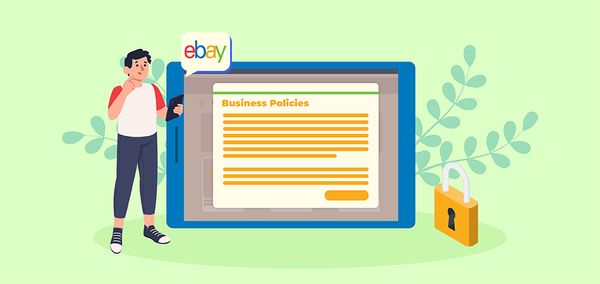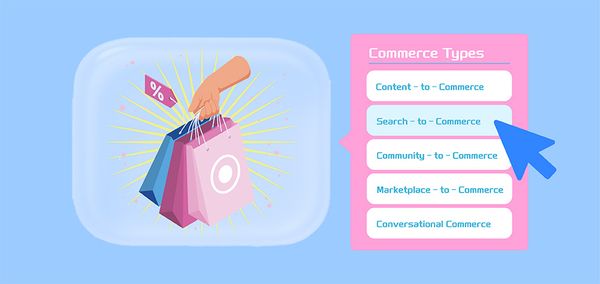How to Keep Track of Business Expenses in eCommerce

The necessity of tracking business expenses in order for a company to remain competitive cannot be stressed. By analyzing important financial indicators such as sales, costs, and profits, company managers may make educated choices about how to use their resources to expand.
Let's look at how to keep track of business expenses and revenue if you're ready to take charge of your eCommerce business’s finances.
What Are Business Expenses
According to the Internal Revenue Service (IRS), business expenses are typical and necessary charges spent to conduct your business. It could be inventory, wages, and rent. Rent and insurance are typically fixed expenditures that don't fluctuate significantly. Variable expenditures are foreseen, but they are subject to change.
A few examples are sales commissions, petrol for company cars, and shipping expenditures. You anticipate variable costs each month, but the actual amount will change. Monitoring your company costs lets you know if you'll make or lose money.
How Many Business Expenses in eCommerce
Business expenses are not a fixed amount, but it will be a lot of combined expenses, and for each business, depending on the size, there will be the following essential parts:
1. Salaries and Payments
The first expense you will incur is salary. For a small business or a domestic store, you must also include the labor cost (for yourself or your parents, siblings, etc.) as long as that person participates in the task.
The faster you expand, the more people you'll need to recruit to help with the burden. Moreover, unless you operate in a place where labor is free, you will have to pay these people. This implies you'll need to understand how to manage your cash flow to pay your staff.
2. Sourcing Products
This is the most crucial spending category that you must control. Choosing a reputable supplier is a significant benefit for organizations, particularly B2C. Good product sourcing is where you will get the highest quality items at the lowest rates.
Big merchants spend endless hours scanning the Internet for lucrative prospects. Sitting on low-demand products, on the other hand, is a costly and useless way to invest your money. Instead, invest in the correct tools to assist you in uncovering popular products for your small company.
3. Platform Fees
Every platform charges a fee. If you want to optimize your revenues, you must price these fees for the things you offer. These are a few examples of these charges:
- Amazon - Monthly subscription, referral fees, plus extra fees if you enlist in Amazon fulfills orders (FBA).
- eBay- Insertion, final value, and listing upgrading costs.
- Shopify - $29, $79, or $299 monthly, with extra fees for additional functionality and payment processing.
- PayPal - $2.9% + $0.30 per transaction (an expense that scales with growth).
These costs may not seem excessive at first, but if you sell thousands of products every month and have to wait for a length of time before your profit clears, they mount up and may have a detrimental impact on your cash flow.
4. Software
Today's businesses, particularly those in the eCommerce sector, cannot invest in platforms to enhance the sales process. Human resource management software, sales software, order tracking software, and so on will be part of the platform. Unless you wish to recruit enough people to compensate for the lack of software, you'll need to buy it.
Whether we like it or not, automation is a must-have in eCommerce. Let programs source things, manage your inventory, and create shipping labels for you.
| Get Started Now to Grow Your Online Business with the Best AliExpress Dropshipping Tool - DSers! |
While the software is not free, it is an investment that will save you a lot of money in the long term. The lower your overhead, the greater your cash flow will be.
5. Shipment
As you can see, most customers buy through ECommerce and receive products at their homes through shipping services. So shipping costs are a fact of life when running an eCommerce business.
Your shipping price will depend on the types of products you are selling. Some retailers charge for shipping, while others provide it for free. Your goal will be to bake those costs into the price of your items. Also, don't overlook the shipping necessities, such as boxes, box fillers, mailing labels, and tape. It will cost you not a small amount of money.
6. Returns and Refunds
Accidents happen, packages go missing, and dissatisfied consumers contact you for refunds no matter how skillfully you ship anything. Consumers may also return bad things, incorrect sizes, or unappealing.
Refunds and returns may eat into your profit margins since they are a massive waste of cash and may even force you to throw away perfectly usable things. Always account for returns even if your product is of exceptional quality and durability.
7. Bank and Processing Fees
The plan eventually came together, and you had positive cash flow, but there was one flaw: you had forgotten about bank fees and processing expenses. Someone is out there seeking to charge you a fee at every stage of the eCommerce process.
Importance of Tracking Business Expenses for eCommerce Business
Now that you know what sorts of expenditures to expect as an e-commerce company owner, let's go over why keeping track of them is essential.
Reduce Unnecessary Cost
These are extra costs that are slowing down your company. It might be anything from a drop in productivity every hour of the working day to a different computer system you don't need or a premium program you don't use.
Tracking business expenses allows you to identify such mounting expenditures. When you manage all spending, you can measure what percentage each part takes, how much money it generates, how effective it is, and so on. When you cut a few little, double things, you will save more than you think.
Optimize Necessary Cost
Effectively controlling expenditures does not necessarily imply that you must cut costs. Tracking business expenses should assist you in determining if alternative paths of investment are worthwhile.
This might be a marketing effort that promises increased sales. Instead, you might invest in accounting software that can save you time. You may replace unnecessary and regular expenditures with investments that will help your company expand.
How to Keep Track of Business Expenses in eCommerce
Tracking is not as simple as you tracking that fee daily. You will have to use support tools and be done in specific steps as follows:
Step 1: Create a Business Account
The first step to keep track of company spending is to open a business bank account specific to your business operations. Establish a company checking and savings account and a merchant services account. Having a separate account for your business can make managing your funds much more accessible. Your company costs will be centralized, making it simple to seek tax breaks.
Step 2: Find Accounting Software
The next step is to choose accounting software capable of automating your company records and tracking each cost. Accounting software makes tracking and arranging company spending simple. The best accounting software has reporting capabilities that allow you to compare your company spending from year to year.
Step 3: Link Your Financial Institutions
Connect your accounting software to your banks to make monitoring company spending easier. It will retrieve all bank transactions automatically and classify your spending. You may also combine additional operations, such as inputting daily transactions and downloading bank statements, making it simple to reconcile accounts.
Step 4: Keep Track of Your Receipts
Keep track of your company spending by filing receipts for your daily activities. All paper receipts and other records, such as bank statements, must be kept for at least three years. Hence, save paper receipts in folders and remember to write the objective of each transaction on the receipts. You may also label and organize the folders by dates or categories.
Step 5: Review and Optimize Your Business Costs
Review your spending regularly to get optimal outcomes from monitoring company expenses. Examine the reports—examine and understand the statistics. Take note of the patterns to observe how much you spend on various areas and how the costs add up. Correct any mistakes and omissions. Evaluating your company will show its financial health and assist you in making important choices for its development.
Tips on How to Keep Track of Business Expenses in eCommerce
Keeping track of your company's spending might be difficult. However, that is one of the simplest methods to lower your total tax obligation. Here are some pointers to help you track business expenses more effectively.
Split Your Personal and Business Expenses
When the company and personal expenditures are combined, it's difficult to tell which costs are for which purpose, resulting in erroneous expense monitoring and improper tax deductions. It is simpler to manage and classify expenditures if they are kept separate. This may assist in guaranteeing that all prices are recorded, and no deductions are overlooked.
Determine Which Costs are Tax Deductible
Knowing which costs are tax-deductible while keeping track of them is helpful. This may simplify the e-commerce monitoring process since you only need to track expenses with a tax advantage. It may also help you plan your tax strategy for the year since you can claim more deductions if you know which ones are available.
Choose the Best Accounting Method for You
The advantage of using an accounting approach is that it makes expenditure tracking easier. For instance, the cash basis method only logs expenses when disbursing the money. On the other hand, the accrual basis technique records the cost as they are incurred, even if no money is exchanged.
Final Words
It is critical to manage how to keep track of business expenses for your eCommerce business. While initially not appealing, monitoring funds gets much simpler once a financial tracking system is in place.
Concentrating on growth may be critical to long-term success, since it helps you to expand your horizons. Discover more helpful tips for your eCommerce business on DSers Blog.













 Company
Company
 Why Choose DSers
Why Choose DSers
 Blog
Blog
 Help Center
Help Center




 Live Chat
Live Chat